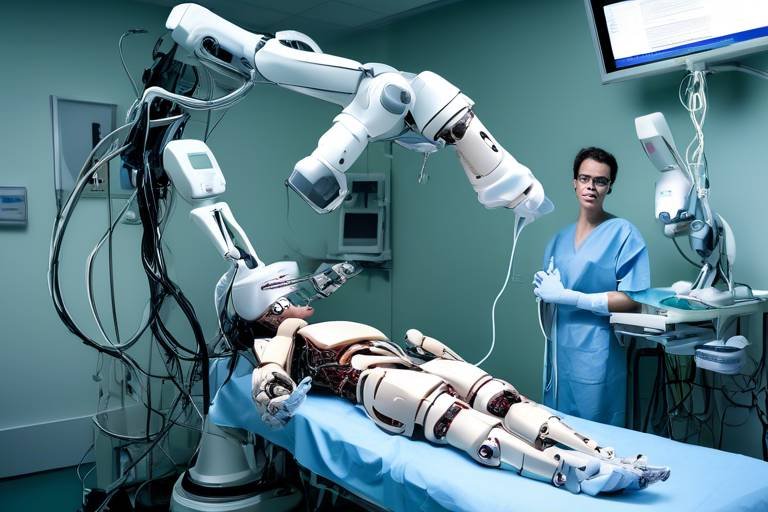The Role of Augmented Reality in Historical Preservation
In recent years, the world has witnessed a remarkable transformation in the way we interact with our cultural heritage, largely thanks to the advent of augmented reality (AR). Imagine standing in front of an ancient ruin, and with just a swipe on your device, the site comes to life with vibrant reconstructions of what it once was. This is not just a dream; it’s the new reality that AR technology brings to the field of historical preservation. By merging the digital and the physical worlds, AR is revolutionizing how we experience history, making it more accessible, engaging, and educational.
But what exactly does this mean for historical preservation? Well, AR allows us to visualize and interact with historical contexts that may have been lost to time. For instance, when visiting a historical site, visitors can point their smartphones or AR glasses at specific locations to see digital overlays that illustrate how the site looked in its prime. This not only enhances the visitor experience but also fosters a deeper understanding of the cultural significance of these sites. It’s like having a time machine in your pocket!
The implications of AR extend beyond mere visual enhancement. It serves as a powerful tool for education, allowing users to engage with history in a way that feels personal and interactive. Imagine students learning about ancient civilizations not just through textbooks but by experiencing a virtual tour of a reconstructed ancient city. They can walk through the streets, observe daily life, and even participate in events that shaped history. This immersive learning experience can ignite a passion for history that traditional methods often fail to inspire.
Moreover, the benefits of AR in historical preservation go hand in hand with the need for effective conservation techniques. As we embrace this technology, we are also equipped with innovative tools that aid in documenting and preserving our heritage. For example, AR can assist experts in creating virtual reconstructions of damaged sites, allowing them to analyze changes over time and plan restoration efforts more effectively. This not only helps preserve the physical structures but also ensures that the stories and lessons of our past remain alive for future generations.
As we delve deeper into the role of AR in historical preservation, it becomes evident that this technology is not just a passing trend. It represents a significant shift in how we perceive and interact with our cultural heritage. By enhancing visitor experiences and providing innovative solutions for conservation, AR is paving the way for a future where history is not just learned but experienced in a truly immersive way.
- What is augmented reality? Augmented reality is a technology that overlays digital information, such as images or sounds, onto the real world, creating an interactive experience.
- How does AR enhance historical preservation? AR enhances historical preservation by providing immersive experiences that allow visitors to visualize and interact with historical contexts, making history more accessible and engaging.
- Are there challenges in implementing AR for historical preservation? Yes, challenges include technological limitations, funding issues, and the need for collaboration among stakeholders in heritage conservation.
- Can AR be used in museums? Absolutely! Many museums are already using AR to enhance exhibits, allowing visitors to interact with digital reconstructions and gain deeper insights into artifacts.
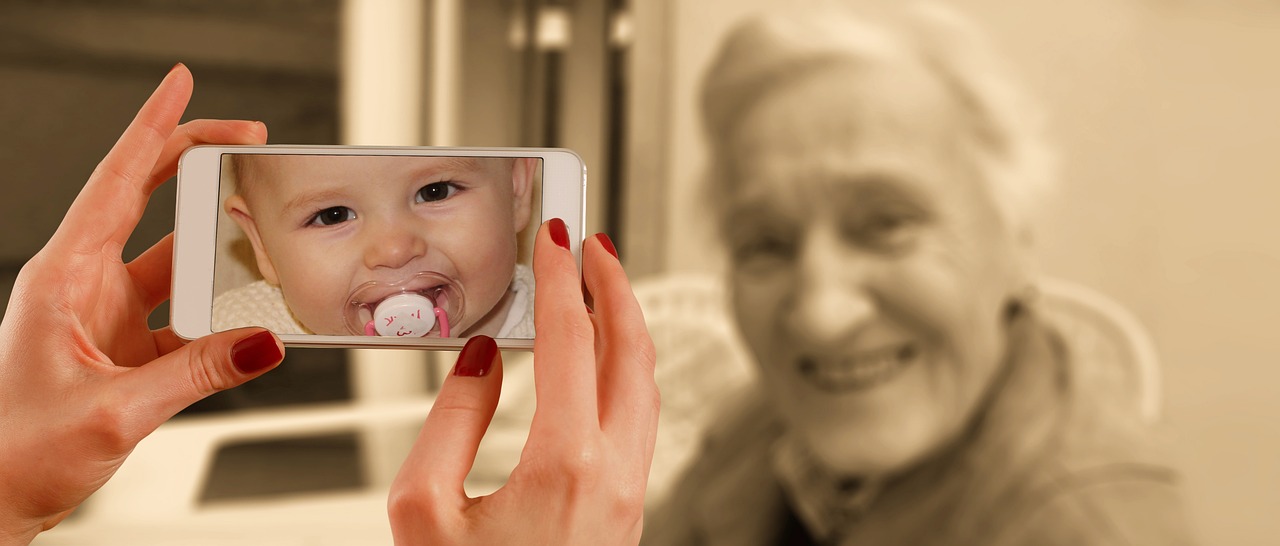
Understanding Augmented Reality
Augmented reality, or AR, is much more than just a tech buzzword; it represents a fascinating convergence of the digital and physical worlds. Imagine walking through a historic site, and as you gaze at ancient ruins, your smartphone or AR glasses overlay vibrant reconstructions of what the site looked like centuries ago. This blending of reality with digital enhancements creates an immersive experience that not only captivates but also educates.
At its core, AR utilizes advanced technologies such as computer vision, simultaneous localization and mapping (SLAM), and depth tracking to superimpose digital content onto the real world. This can include anything from 3D models and animations to contextual information and interactive elements. For instance, while visiting a museum, you might point your device at a painting and instantly receive details about the artist, the historical context, and even a video of the painting being created. This instant access to information transforms how we engage with art and history.
One of the most exciting aspects of AR is its ability to enhance our understanding of historical sites and artifacts. By providing interactive visualizations and information overlays, AR allows visitors to delve deeper into the stories behind the objects and locations they are exploring. Think of it as a time machine that not only shows you the past but also helps you understand its significance in the present. This technology bridges the gap between mere observation and active participation, making history come alive in a way that textbooks simply cannot.
Moreover, AR can cater to various audiences, from schoolchildren on field trips to seasoned historians. It can adapt its content based on the user's age, interests, and level of expertise, ensuring that everyone walks away with a richer understanding of cultural heritage. The potential applications are vast, ranging from educational programs in schools to immersive experiences in tourist destinations.
As we continue to explore the possibilities of AR, it's essential to recognize that this technology is not just about flashy graphics and cool gadgets. It's about creating meaningful connections with our past and ensuring that future generations can appreciate and learn from it. With AR, we have the opportunity to redefine how we experience history, making it more accessible, engaging, and relevant than ever before.

Benefits of AR in Historical Preservation
Augmented Reality (AR) is not just a buzzword; it's a revolutionary tool that is reshaping the landscape of historical preservation. Imagine standing in front of an ancient ruin and suddenly seeing it come to life with vibrant colors and bustling activity from centuries ago. This is the magic of AR, and it offers a plethora of benefits that make historical preservation more accessible and engaging than ever before.
One of the most significant advantages of AR is its ability to improve accessibility. Historical sites can often be challenging for some visitors to navigate due to physical barriers or a lack of information. With AR, anyone with a smartphone or tablet can access a wealth of information and visual aids that enhance their understanding of a site without needing to be physically present. This democratization of knowledge means that more people can experience and appreciate our cultural heritage.
Moreover, AR opens the door to enhanced educational opportunities. Traditional methods of learning about history can sometimes feel dry or unengaging. However, AR transforms learning into an interactive experience. Imagine a classroom where students can explore a virtual version of ancient Rome, walking through the streets and interacting with historical figures. This kind of experience not only captivates the imagination but also fosters a deeper understanding of historical contexts.
Another compelling benefit of AR in historical preservation is its ability to visualize historical contexts that may no longer be physically present. For instance, AR can recreate a long-gone building or event, allowing visitors to see what once was. This capability is particularly valuable in areas where physical remnants are minimal or where restoration is not feasible. By providing a visual representation of the past, AR helps bridge the gap between history and the present, allowing us to appreciate the significance of what has come before.
Furthermore, the integration of AR into historical preservation can lead to innovative storytelling. By layering narratives over real-world locations, AR can create a rich tapestry of stories that engage visitors on multiple levels. For example, a simple walk through a historic district can be transformed into a journey through time, where users can hear stories, see animations, and interact with characters from the past. This immersive storytelling approach not only entertains but also educates, making history feel alive and relevant.
In addition to these benefits, AR can also enhance the visitor experience by providing interactive elements that encourage exploration. Imagine being able to point your device at a statue and instantly receive information about its history, significance, and the artist behind it. This interaction not only enriches the visit but also encourages visitors to ask questions and seek out more information, fostering a culture of curiosity and learning.
As we look to the future, the potential for AR in historical preservation seems limitless. The ability to create engaging, interactive experiences that educate and inspire is a game-changer for museums, archaeological sites, and historical landmarks. By embracing this technology, we can ensure that our cultural heritage is preserved not just in books and artifacts, but in the hearts and minds of future generations.
- What is Augmented Reality (AR)?
AR is a technology that overlays digital information, such as images and sounds, onto the real world, enhancing our perception of our surroundings. - How does AR improve accessibility in historical sites?
AR allows visitors to access additional information and visual aids on their devices, making it easier for everyone to understand and appreciate historical sites. - Can AR help in the restoration of historical sites?
Yes, AR can provide tools for virtual reconstruction, helping experts analyze changes over time and plan effective restoration efforts.

Enhancing Visitor Engagement
In the world of historical preservation, engaging visitors is paramount. Imagine stepping into a museum or an archaeological site and being greeted not just by artifacts, but by a dynamic experience that brings history to life. Augmented Reality (AR) does just that, transforming passive observation into an interactive journey. By layering digital information over physical spaces, AR allows visitors to dive deep into the narratives that shaped our past. It’s like having a personal tour guide in your pocket, ready to reveal the untold stories behind every object and site.
One of the most exciting aspects of AR is its ability to create interactive experiences. For instance, visitors can point their devices at a relic and instantly see a 3D reconstruction of how it looked in its prime. This not only captivates the audience but also fosters a deeper understanding of the cultural significance of the items on display. Instead of merely reading a plaque, guests can watch a short animation that illustrates the historical context of an artifact, making learning both fun and memorable.
Moreover, AR encourages exploration. Imagine walking through a historical district where, with a simple scan of your smartphone, you can access a wealth of information about each building's history, architectural style, and the stories of the people who once inhabited them. It’s like peeling back the layers of time, revealing the vibrant history that lies beneath our feet. This immersive experience not only enhances visitor engagement but also helps bridge the gap between generations, making history accessible and relatable to everyone.
Additionally, AR can gamify the experience, appealing particularly to younger audiences. By incorporating game-like elements—such as challenges, quizzes, or scavenger hunts—visitors can earn rewards or unlock new content as they explore. This playful approach transforms the educational experience into an adventure, encouraging participation and sparking curiosity about cultural heritage. It's a win-win situation where learning becomes an engaging endeavor rather than a chore.
In summary, AR is revolutionizing how we engage with history. It turns static exhibits into dynamic interactions, allowing visitors to immerse themselves in the past like never before. The potential for enhanced engagement through AR is limitless, and as technology continues to evolve, so too will the ways we connect with our cultural heritage.
- What is Augmented Reality?
Augmented Reality (AR) is a technology that overlays digital information—such as images, sounds, and text—onto the real world, enhancing the user's perception and interaction with their environment.
- How does AR enhance visitor engagement in historical sites?
AR enhances visitor engagement by providing interactive experiences that allow users to explore historical narratives, view reconstructions, and access additional information in an immersive way.
- What are some examples of AR in museums?
Museums use AR to create interactive exhibits, allowing visitors to see 3D models of artifacts, watch animations that explain historical contexts, and participate in gamified learning experiences.
- Are there any challenges to implementing AR in historical preservation?
Yes, challenges include technological limitations, funding issues, and the need for collaboration among various stakeholders in heritage conservation.
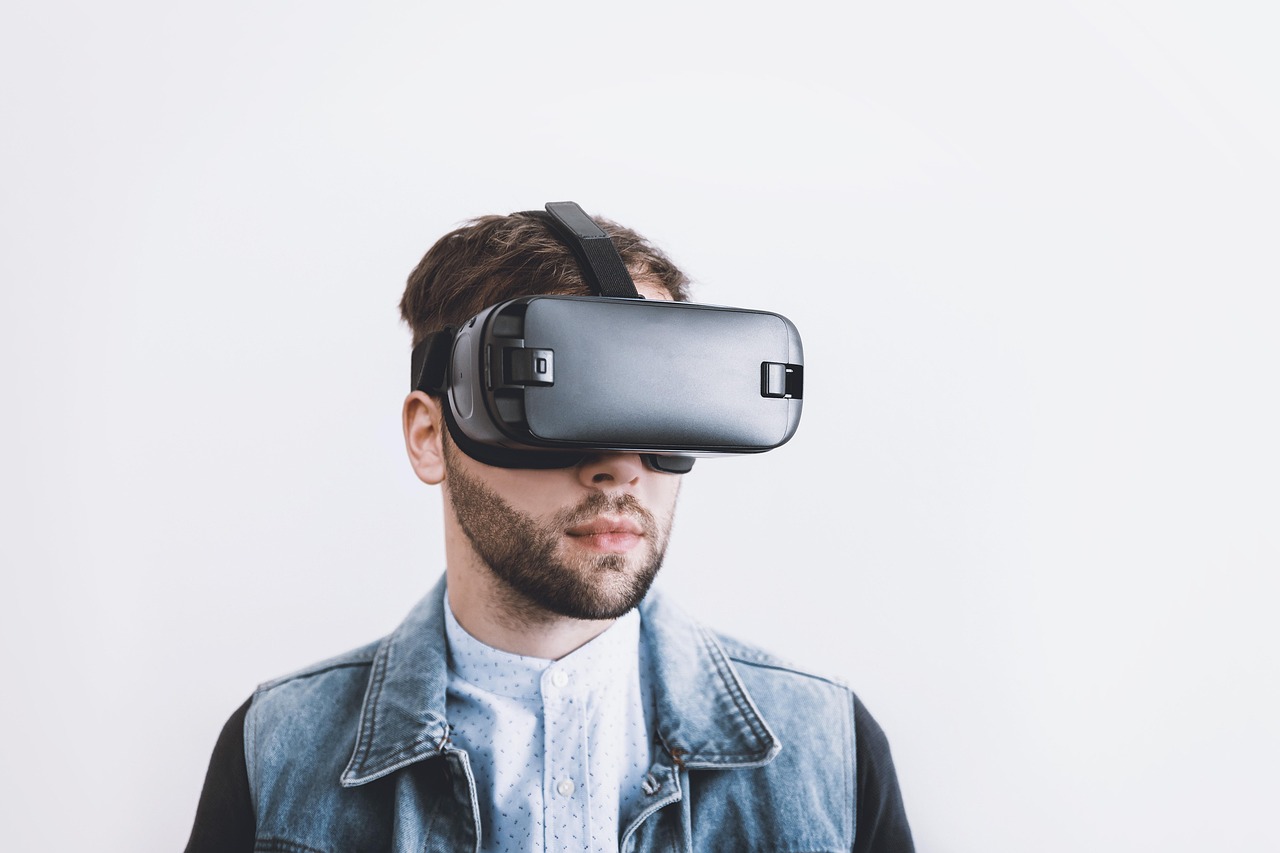
Interactive Tours
Imagine stepping into a historical site and being greeted not just by the ancient stones and artifacts, but also by a vibrant digital world that brings history to life. powered by augmented reality (AR) are doing just that, transforming the way we experience and understand our cultural heritage. These tours allow visitors to engage with their surroundings in a way that traditional guided tours simply cannot match. Instead of passively listening to a guide, guests can actively participate in their own learning journey.
When you embark on an interactive tour, your smartphone or AR glasses become a window into the past. As you move through a site, digital overlays provide context and information, enriching your experience. For instance, while standing in front of a crumbling wall, you might see a reconstruction of what it looked like centuries ago, complete with bustling crowds and vibrant colors. This visualization not only captivates the imagination but also helps to contextualize the historical significance of the location.
Moreover, interactive tours can be tailored to various audiences, ensuring that everyone, from history buffs to casual visitors, can find something intriguing. For example, younger audiences might enjoy gamified elements, where they can earn points or badges by answering trivia questions or completing challenges related to the site. This approach not only makes learning fun but also encourages deeper engagement with the material. As they navigate through the tour, they might encounter:
- Augmented reconstructions of historical events, allowing them to witness pivotal moments in a more immersive way.
- Interactive quizzes that test their knowledge and encourage them to pay attention to the details around them.
- Personalized narratives that cater to their interests, making the experience feel unique and tailored.
Furthermore, the data collected from these interactive tours can provide invaluable insights to historians and archaeologists. By analyzing how visitors engage with different elements of the tour, professionals can better understand what aspects of history resonate with the public, potentially guiding future exhibitions and educational programs.
In conclusion, interactive tours are not just a gimmick; they represent a significant evolution in how we interact with history. By blending the physical and digital worlds, AR technology is making historical sites more accessible and engaging than ever before. As we continue to embrace this innovative approach, the stories of our past become not just relics to be observed but vibrant narratives to be experienced.

Gamification of History
Imagine stepping into a world where history isn't just something you read about in dusty textbooks but comes alive through interactive experiences! Gamification of history is revolutionizing how we engage with our cultural heritage, especially for younger audiences who might find traditional methods a bit, well, stale. By incorporating game-like elements into augmented reality (AR) experiences, museums and historical sites create a dynamic learning environment that not only captivates but also educates.
So, what does this look like in practice? Picture this: you walk into a museum and are handed an AR device or simply use your smartphone. As you move through the exhibits, you can unlock challenges, earn points, and even compete with friends on leaderboards. This isn't just about passively observing artifacts; it's about actively participating in the narrative of history. You might have to solve puzzles related to ancient civilizations, embark on quests to uncover lost relics, or even engage in virtual reenactments of historical events.
Some key features of gamification in historical contexts include:
- Interactive Quests: Visitors can embark on quests that require them to find specific artifacts or complete tasks related to the exhibits.
- Points and Rewards: Gamification often introduces a points system where users can earn rewards for completing educational tasks, encouraging them to learn more.
- Collaboration: Many AR experiences allow users to collaborate, fostering teamwork and making learning a social activity.
This approach not only makes history more appealing but also fosters a deeper connection to our cultural heritage. By turning learning into a game, we encourage curiosity and exploration, transforming how individuals perceive and appreciate the past. The thrill of competition and the joy of discovery can lead to a more profound understanding of historical contexts and significance.
In essence, gamification of history through AR is like adding a sprinkle of magic to the mundane. It invites us to step back in time, not just as observers but as active participants in the unfolding stories of our ancestors. So, the next time you visit a historical site or museum, keep an eye out for those interactive experiences that promise to make history not just informative, but downright fun!
- What is augmented reality? Augmented reality (AR) is a technology that overlays digital information onto the real world, enhancing the user's experience of their environment.
- How does gamification enhance learning? By introducing game elements such as challenges, rewards, and competition, gamification makes learning more engaging and interactive, leading to better retention of information.
- Can AR be used in all historical sites? While AR can be implemented in many historical sites, its effectiveness may vary based on the site's infrastructure and the technological resources available.
- What are some examples of AR in museums? Many museums now feature AR experiences that allow visitors to see digital reconstructions of artifacts, engage with interactive exhibits, and participate in educational games.

Preservation Techniques
In the realm of historical preservation, augmented reality (AR) emerges as a revolutionary tool that not only enhances our understanding of the past but also aids in the meticulous documentation and conservation of historical sites. Imagine standing before a crumbling ruin and, with just a swipe on your device, witnessing a vibrant reconstruction of what it once was. This is the magic of AR! By providing virtual reconstructions, AR allows experts to analyze the evolution of historical sites over time, making it easier to plan effective restoration efforts.
One of the most compelling aspects of AR in preservation is its ability to visualize historical contexts that may no longer be physically present. For instance, AR can recreate long-gone structures or landscapes, offering viewers a glimpse into the past that enriches their understanding of the present. This technology serves as a bridge between time periods, allowing us to appreciate the significance of our cultural heritage in a more profound way.
Furthermore, AR can assist in the training of conservationists and archaeologists. By simulating various restoration techniques and outcomes, aspiring professionals can gain hands-on experience without the risks associated with working on actual artifacts or sites. This kind of immersive learning environment not only enhances their skills but also prepares them for the challenges they will face in the field.
To illustrate the impact of AR on preservation techniques, consider the following table that outlines some key applications:
| Application | Description | Benefits |
|---|---|---|
| Virtual Reconstruction | Creating digital models of historical sites | Enhances understanding of historical architecture |
| Interactive Documentation | Overlaying historical data on current sites | Provides context and educational insights |
| Training Simulations | Using AR for training in conservation techniques | Prepares professionals for real-world challenges |
In addition to these applications, AR can also play a crucial role in community engagement. By involving local communities in the preservation process through AR experiences, we can foster a sense of ownership and pride in cultural heritage. Imagine community members participating in an AR-driven project that brings their history to life, allowing them to share their stories and connect with their roots.
In conclusion, the integration of augmented reality in preservation techniques is not just a trend; it is a necessity for the future of cultural heritage conservation. By leveraging this technology, we can ensure that the stories of our past are not only preserved but also celebrated in ways that resonate with current and future generations.
- What is augmented reality? Augmented reality is a technology that overlays digital information onto the real world, enhancing our perception and interaction with our surroundings.
- How does AR help in preserving historical sites? AR aids in the visualization of historical contexts, provides virtual reconstructions, and enhances educational experiences, making history more accessible and engaging.
- Are there any challenges in implementing AR for preservation? Yes, challenges include technological limitations, funding issues, and the need for collaboration among various stakeholders in heritage conservation.
- Can AR be used for community engagement in historical preservation? Absolutely! AR can involve local communities in the preservation process, fostering a sense of ownership and pride in their cultural heritage.
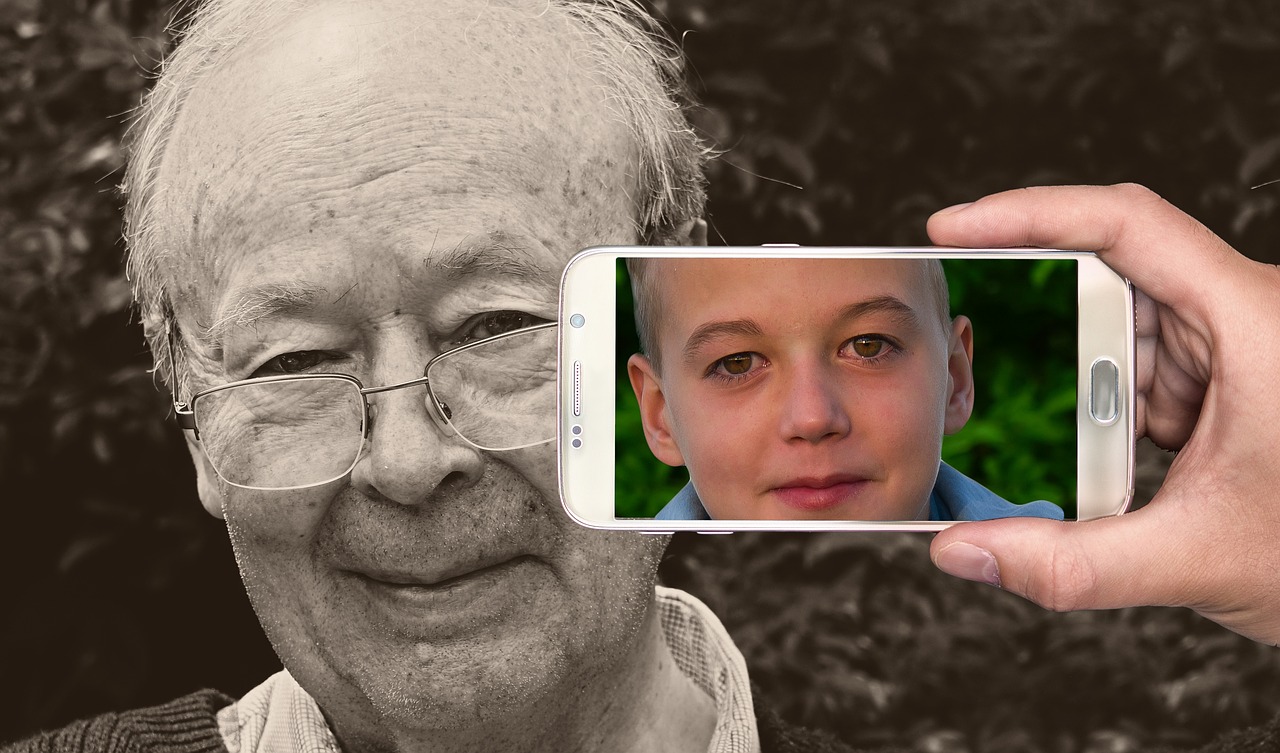
Case Studies of AR Implementation
As the world embraces the digital age, augmented reality (AR) is stepping into the spotlight, especially in the realm of historical preservation. Several case studies illustrate how AR is not just a futuristic concept but a practical tool that enhances our understanding of history. One notable example is the Smithsonian Institution, which has integrated AR into its exhibits, allowing visitors to interact with artifacts in a way that was previously unimaginable. Imagine standing before a centuries-old artifact, and with a simple scan of your device, witnessing a vivid reconstruction of its original form, complete with historical context. This kind of immersion transforms a passive viewing experience into an engaging exploration.
Another remarkable case is the Colosseum in Rome. AR applications here enable tourists to visualize the grandeur of the ancient arena as it once was, bustling with spectators and gladiators. Through their smartphones or AR glasses, visitors can see animated scenes of historical events unfold right before their eyes, bridging the gap between the past and present. This not only enhances the visitor experience but also deepens their appreciation for the architectural marvel that the Colosseum represents.
In addition to museums and archaeological sites, urban environments are also taking advantage of AR technology. For instance, the City of Boston launched an AR app that allows users to explore historical landmarks while learning about their significance through interactive overlays. Users can point their devices at buildings and receive detailed information about their history, architectural style, and the stories of the people who lived there. This innovative approach not only preserves history but also makes it accessible to a broader audience.
To illustrate the impact of AR in these case studies, we can summarize the key implementations in the following table:
| Location | AR Application | Impact |
|---|---|---|
| Smithsonian Institution | Interactive artifact reconstructions | Enhances visitor engagement and learning |
| Colosseum, Rome | Historical event visualizations | Bridges the gap between past and present |
| Boston | AR app for historical landmarks | Makes history accessible to a broader audience |
These case studies clearly demonstrate that AR is not merely a passing trend; it is a powerful medium that enriches our understanding of history. By providing immersive experiences, AR technology invites users to engage with cultural heritage in ways that are both educational and entertaining. As we continue to explore and innovate, the potential for AR in historical preservation is boundless, promising exciting developments for future generations.
What is Augmented Reality (AR)?
Augmented Reality (AR) is a technology that overlays digital information—such as images, sounds, or other data—onto the real world, enhancing our perception of our surroundings. It is commonly experienced through smartphones, tablets, or AR glasses.
How does AR enhance historical preservation?
AR enhances historical preservation by providing interactive experiences that allow users to visualize historical contexts, engage with artifacts, and learn about cultural heritage in an immersive manner. It helps bridge the gap between the past and present, making history more accessible and engaging.
Are there any challenges in implementing AR for historical preservation?
Yes, challenges include technological limitations, funding issues, and the need for collaboration among various stakeholders in heritage conservation. Ensuring that AR applications are accessible and user-friendly is also crucial for their success.
Can AR be used in outdoor historical sites?
Absolutely! AR can be effectively used in outdoor historical sites to provide visitors with contextual information, visualizations of past events, and interactive experiences that enhance their understanding of the site’s significance.

Museum Exhibits
Museums have long been the guardians of our cultural heritage, showcasing artifacts that tell the stories of our past. With the advent of augmented reality (AR), these institutions are now able to elevate the visitor experience to unprecedented heights. Imagine walking into a gallery and seeing a centuries-old painting come to life, or an ancient artifact that provides a 3D view of its historical context. This is not just a fantasy; it's the new reality for many museums around the world.
By integrating AR technology into their exhibits, museums can create a more interactive and immersive environment for their visitors. This technology allows guests to use their smartphones or AR glasses to unlock additional layers of information about the exhibits. For instance, when a visitor points their device at a sculpture, they might see a digital overlay that reveals details about the artist, the materials used, and the historical significance of the piece. This not only enriches the educational experience but also fosters a deeper emotional connection to the artifacts.
Furthermore, AR can facilitate the visualization of artifacts that are no longer present. Imagine a museum that displays a fragment of an ancient structure; with AR, visitors can see a reconstruction of the entire building as it once stood. This capability allows for a more comprehensive understanding of historical contexts, making the past more tangible and relatable.
One notable example of AR in museum exhibits is the Smithsonian Institution, which has incorporated AR applications into several of its displays. Visitors can use an app to view 3D models of historical artifacts, providing insights into their construction and use. This kind of engagement transforms the passive act of viewing into an active exploration of history.
However, the implementation of AR in museum exhibits does come with its challenges. Museums must consider factors such as technological accessibility, ensuring that all visitors can benefit from these enhancements, and the cost of development, which can be significant. Additionally, staff must be trained to manage and maintain these new technologies, ensuring that they function seamlessly during visitor interactions.
In conclusion, the integration of augmented reality into museum exhibits not only enhances the visitor experience but also serves as a powerful tool for education and engagement. As more museums adopt this technology, we can expect to see a transformation in how we interact with and understand our cultural heritage. The future of museums is not just about preserving the past; it's about bringing it to life in ways we never thought possible.
- What is augmented reality? Augmented reality is a technology that overlays digital information onto the real world, enhancing our perception of our surroundings.
- How does AR improve museum experiences? AR creates interactive and immersive experiences, allowing visitors to engage with exhibits in a more meaningful way.
- Are there any challenges to implementing AR in museums? Yes, challenges include technological limitations, funding issues, and the need for staff training.
- Can anyone access AR features in museums? Museums strive to make AR accessible to all visitors, but availability may depend on the technology used.
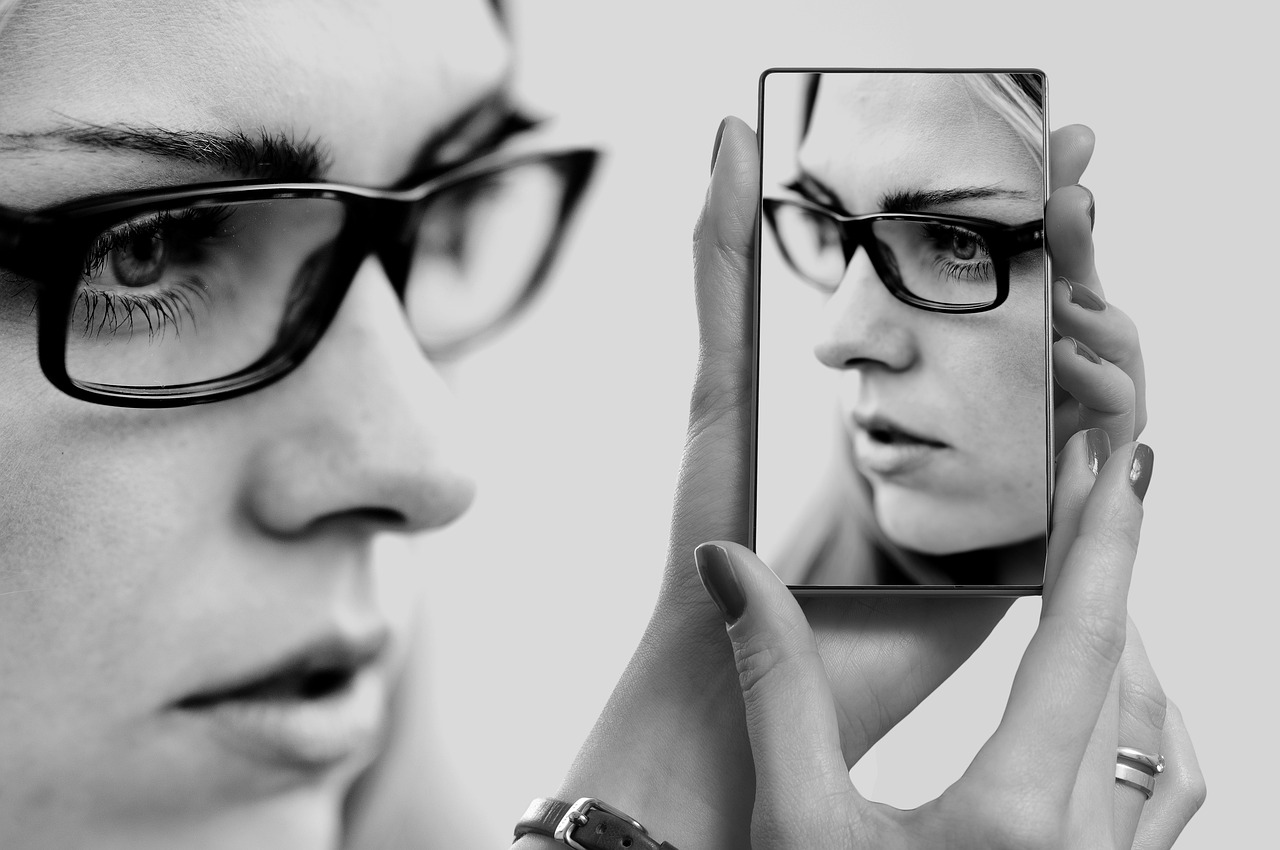
Archaeological Sites
The integration of augmented reality (AR) in archaeological sites is nothing short of revolutionary. Imagine standing amidst ancient ruins, where the stones whisper stories of civilizations long gone, and with a simple swipe on your device, those stories come to life! AR allows visitors to visualize past civilizations, providing a unique window into history that was previously unimaginable. This technology bridges the gap between what we see today and what once was, transforming how we engage with our cultural heritage.
One of the most remarkable aspects of AR at archaeological sites is its ability to contextualize ruins. For instance, when standing in front of a crumbling wall, AR can overlay digital reconstructions of the original structure, complete with its intricate designs and vibrant colors. This not only enhances the visitor experience but also deepens our understanding of the site’s historical significance. Imagine walking through the ancient streets of Pompeii, and with a quick scan, seeing the bustling marketplace as it was over two thousand years ago. The experience is immersive and educational, making history feel tangible and real.
Moreover, AR applications can provide interactive features that engage visitors on multiple levels. For example, users might be prompted to answer questions, solve puzzles, or even participate in guided tours led by virtual characters that represent historical figures. This gamification of history makes the learning process not only informative but also entertaining, particularly for younger audiences who might otherwise find history dry and uninteresting. By incorporating elements of play, AR encourages deeper exploration and engagement with the site.
The use of AR in archaeological contexts also facilitates educational outreach. Schools and universities can utilize AR tools to create virtual field trips, allowing students to explore significant sites without leaving their classrooms. This accessibility can spark interest in archaeology and history among students who might not have the opportunity to visit these sites in person. Furthermore, AR can assist researchers by providing a platform for sharing findings and interpretations with a broader audience, fostering a collective appreciation for our shared heritage.
However, while the potential of AR in archaeological sites is vast, it is essential to consider the challenges that come with it. Issues such as technological limitations, the cost of development, and the need for collaboration among stakeholders can hinder the implementation of AR projects. Despite these challenges, the benefits of bringing history to life through AR are undeniable, and as technology continues to evolve, we can expect to see even more innovative applications in the future.
In conclusion, the incorporation of augmented reality into archaeological sites is a game-changer for both preservation and education. By providing immersive experiences that allow visitors to visualize and interact with history, AR not only enhances our understanding of the past but also fosters a deeper connection to our cultural heritage. As we continue to explore the possibilities of this technology, the stories of ancient civilizations will undoubtedly resonate with new generations in ways we have yet to imagine.
- What is augmented reality? - Augmented reality (AR) is a technology that overlays digital information and images onto the real world, enhancing the user's experience and interaction with their environment.
- How does AR benefit archaeological sites? - AR enhances visitor engagement, provides educational opportunities, and allows for the visualization of historical contexts that may no longer exist.
- Are there any challenges in implementing AR in historical preservation? - Yes, challenges include technological limitations, funding issues, and the need for collaboration among various stakeholders in heritage conservation.
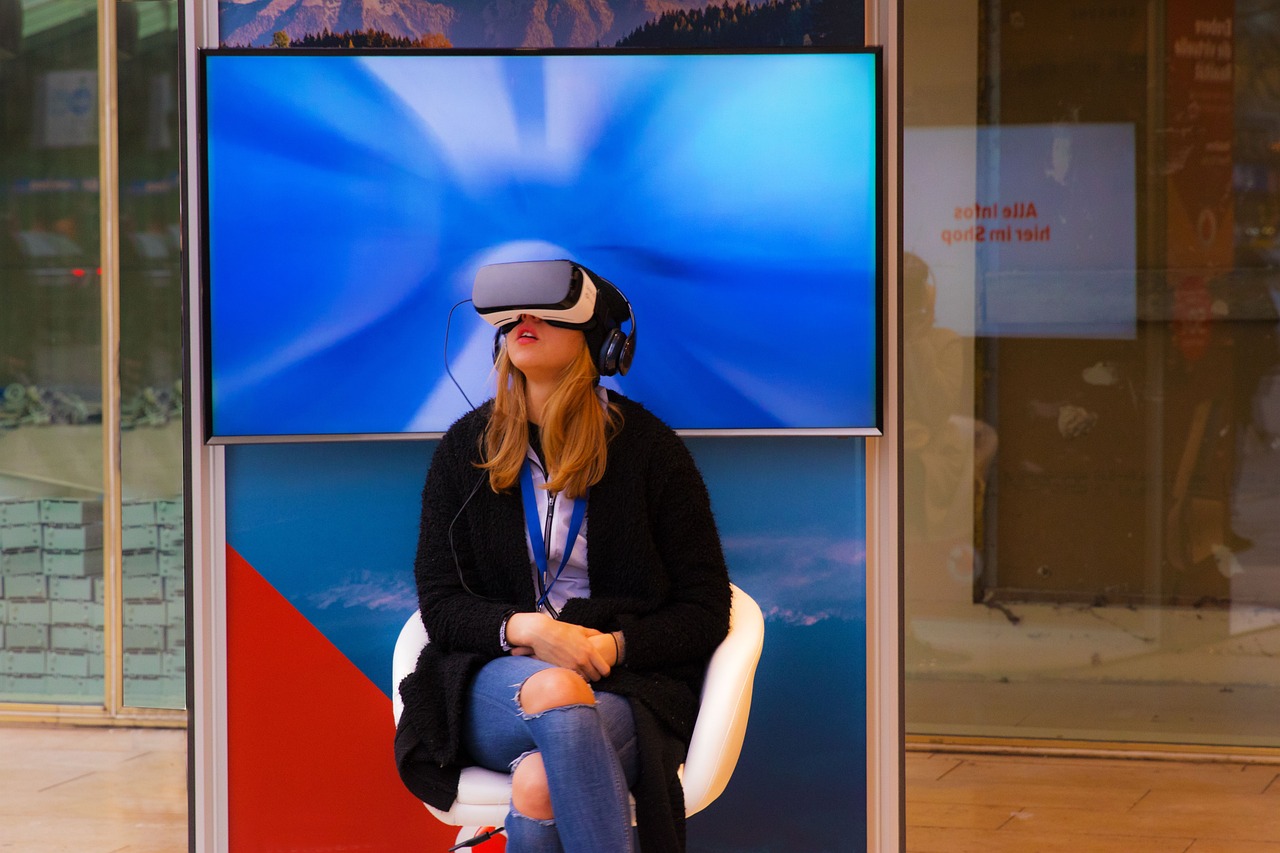
Challenges and Considerations
While the integration of augmented reality (AR) into historical preservation presents exciting opportunities, it is not without its challenges. One of the primary hurdles is the technological limitations that can impede the quality and accessibility of AR applications. For instance, not all visitors may have access to the latest smartphones or tablets capable of running advanced AR software. Furthermore, the need for high-speed internet connectivity can create disparities in user experience, particularly in rural or underfunded historical sites.
Another significant challenge lies in funding issues. Developing and implementing AR solutions can be costly. Many museums and heritage sites operate on tight budgets, making it difficult to allocate resources for cutting-edge technology. This financial constraint often leads to reliance on grants or sponsorships, which can be inconsistent and uncertain. As a result, some projects may be delayed or even canceled due to a lack of financial support.
Collaboration is key in the successful implementation of AR in historical preservation. However, achieving this can be complicated. Different stakeholders, including government bodies, private organizations, and community groups, often have varying priorities and objectives. This divergence can lead to conflicts or misaligned goals, hindering the development of cohesive AR projects. Establishing a common ground and fostering effective communication among these parties is crucial for the successful deployment of AR initiatives.
Moreover, there are ethical considerations to take into account. As AR technology overlays digital content onto real-world sites, it raises questions about the authenticity of the experience. How do we ensure that the digital enhancements do not overshadow the historical significance of the site? Striking a balance between engaging visitors and preserving the integrity of the historical narrative is essential. Additionally, there is the challenge of ensuring that the information provided through AR is accurate and respectful of the cultural context.
Lastly, user experience is a critical aspect that cannot be overlooked. If the AR experience is too complex or not user-friendly, it may alienate visitors rather than engage them. Ensuring that the technology is intuitive and accessible is paramount. This could involve conducting user testing and gathering feedback to refine the AR applications continually.
- What is augmented reality? Augmented reality (AR) is a technology that overlays digital information, such as images or sounds, onto the real world, enhancing the way we perceive our environment.
- How can AR benefit historical preservation? AR can enhance visitor engagement, provide educational opportunities, and help visualize historical contexts that are no longer physically present.
- What are some challenges of using AR in historical preservation? Key challenges include technological limitations, funding issues, the need for collaboration among stakeholders, ethical considerations, and ensuring a positive user experience.
- Are there successful examples of AR in museums? Yes, many museums have successfully implemented AR to enhance exhibits, allowing visitors to interact with digital reconstructions and gain deeper insights into artifacts.
Frequently Asked Questions
- What is Augmented Reality (AR) and how does it relate to historical preservation?
Augmented Reality (AR) is a technology that overlays digital information onto the real world, enhancing our perception of our surroundings. In historical preservation, AR allows visitors to experience historical sites and artifacts in a more immersive way by providing interactive visualizations and contextual information that enrich their understanding of cultural heritage.
- How does AR improve visitor engagement at historical sites?
AR transforms traditional visits into interactive experiences by enabling visitors to use their devices to unlock additional content, view reconstructions, and interact with digital elements. This level of engagement helps people connect more deeply with historical narratives and the stories behind artifacts, making their visit more memorable and informative.
- Can AR make history more appealing to younger audiences?
Absolutely! By incorporating game-like elements and interactive features, AR captures the attention of younger audiences, making history feel more relatable and enjoyable. Gamification encourages participation and learning, fostering a genuine interest in cultural heritage among the youth.
- What are some examples of AR applications in museums?
Museums are increasingly integrating AR into their exhibits, allowing visitors to interact with digital reconstructions of artifacts and access in-depth information about the items on display. This not only enhances the educational experience but also makes the exhibits more engaging and accessible.
- How does AR help in the preservation of archaeological sites?
AR applications at archaeological sites provide visitors with the ability to visualize past civilizations and understand the historical significance of the ruins. By bridging the gap between the past and present, AR helps to educate the public about the importance of preserving these sites for future generations.
- What challenges does AR face in historical preservation?
While AR offers exciting possibilities, it also faces challenges such as technological limitations, funding issues, and the need for collaboration among various stakeholders in heritage conservation. Addressing these challenges is crucial for the successful implementation of AR in historical preservation.














